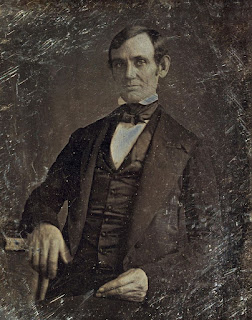Was Wisconsin Governor Davidson My Second-Great-Grandmother’s Nephew?
Ragnhild Olsdatter (Nausteplassen) Ve: 1800-1918
Gov. James O. Davidson: 1854-1922
According
to other genealogists in my Peterson-Severson extended family, my
second-great-grandmother, Ragnhild Olsdatter Ve, had a half-nephew who became a
political powerhouse in America. I am trying—unsuccessfully so far-- to verify
this story.
I continually struggle to find records for my
Norwegian ancestors. The Norwegian practice of using the father’s first name,
combined with the name of the farm where the family worked and lived, as a
surname, has me greatly confused. I have discovered that people can have more
than one combination surname—when they moved to a new town, the place name part
of the surname would change. Siblings could thus have different names. Girls
would have a surname like Olsdatter (Ole’s daughter), while sons would have the
surname Olson or Olsen. Then the farm name adds more uncertainty. One daughter
could be Olsdatter Ve, for the Ve farm, and another Osdatter Joramo, when the
family moved to a new home. So many possible combinations. I am never sure if
anything I find can be trusted or verified. Obviously I need the help of a
genealogist who specializes in Norway to help me.
Ragnhild
Olsdatter Ve (sometimes Vee, sometimes with the Nausteplassen location added)
was born some time around 1807 near OvreArdal, Sogn Og Fjordane, Norway. It
appears her parents were Ole Johannesen and Jorond Monsdatter. Shortly after
her birth, in 1810, her father died.
 |
| Ragnhild Olsdatter Ve |
Apparently
her mother remarried and had at least one more child, a son named Ole Davidson.
Ole was Ragnhild’s half-brother. I have not been able to verify this part of
the story using Ancestry records. Other family trees agree that Ole Johannesen
died in 1810, but have no records attached that prove the year of death. And I
find no record of Jorond’s remarriage and the birth of additional children with
her new husband.
I tried to
work backwards from the records of Wisconsin Governor James O. Davidson.
According to his obituary and his Wikipedia entry, Davidson was born February
10, 1854 in Årdal, Sogn og Fjordane County, Norway to parents Ole Davidson and
Ingabor Jensdatter. James, at that point
called Jens, immigrated in 1872 to the United States when he was 18 years old.
He was accompanied by his widowed father. These details are suggestive.
Jens/James was born in the correct area of Norway. But the half-sibling link
between Ole Davidson and Ragnhild’s mother is missing thus far.
James
Davidson arrived in Wisconsin in debt for his passage and needing a way to
support himself. He first worked as farm laborer, and then trained as a tailor.
He started a successful mercantile and tailoring business in Soldiers Grove
Wisconsin. He married Helen Bliss in 1883, and became involved in Republican
politics.
 |
| Gov. James O. Davidson |
Davidson
served three terms in the Wisconsin State Assembly from 1893 to 1899. He was
elected Wisconsin State treasurer in 1898 and 1900. He joined Robert M. La
Follette’s gubernatorial ticket, and was elected Lieutenant Governor in 1902,
serving until 1906 when Gov. La Follette resigned to become Wisconsin’s
Senator. Davidson filled the remainder of La Follette’s term. He was elected
governor in the next election, and re-elected in 1908, serving until 1911. According to Wikipedia, under his leadership
“state regulation of the railroads was extended to include public utilities,
telegraph, telephone, electricity, water companies, and the insurance
industry.” He seems to have been an effective leader.
I will
continue to search for records that will verify Gov. Davidson’s connection to
my ancestors. Until then, our link to political power in the early twentieth
century will remain tantalizing but unproven.
Sources:
https://www.nrk.no/nyheter/distrikt/nrk_sogn_og_fjordane/fylkesleksikon/1517627.html
Obituary of Gov. James O. Davidson. http://freepages.rootsweb.com/~wisobits/genealogy/name/d.html#DavidsonJamesOGov
Family Tree prepared by Joel Botten.
























